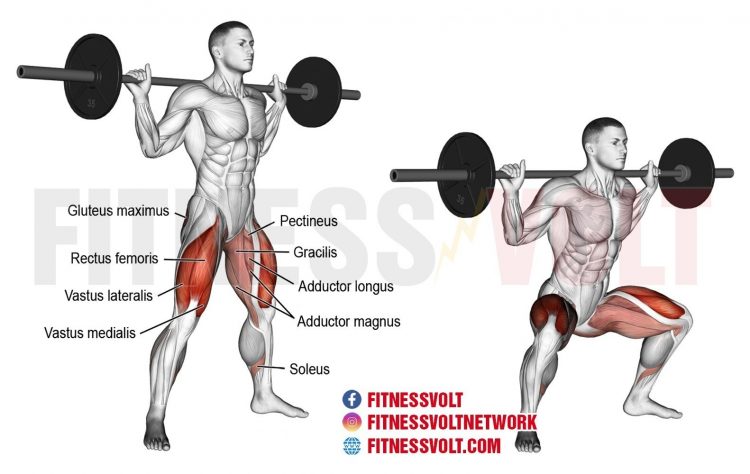Sumo squats, also known as sumo deadlifts, are a popular exercise that targets multiple muscle groups in the lower body. This exercise can be performed with or without weights and is beneficial for building strength and endurance. In this article, we will explore the muscles that are targeted during a sumo squat and how to perform this exercise correctly.
The Benefits of Sumo Squats

Sumo squats are an excellent exercise for building lower body strength, endurance, and power. This exercise targets the quadriceps, hamstrings, glutes, and calves, making it a full-body movement. Sumo squats are also beneficial for improving mobility, stability, and balance.
Sumo squats can be performed with or without weights, making them an accessible exercise for all fitness levels. Adding weight to the exercise can increase the intensity and challenge the muscles even more.
The Muscles Targeted in Sumo Squats

The primary muscles targeted during a sumo squat are the quadriceps, hamstrings, and glutes. The quadriceps, located on the front of the thigh, are responsible for extending the knee joint. The hamstrings, located on the back of the thigh, are responsible for flexing the knee joint and extending the hip joint. The glutes, located in the buttocks, are responsible for hip extension and abduction.
In addition to these primary muscles, sumo squats also work the calves, lower back, and core muscles. The calves assist in ankle dorsiflexion, while the lower back and core muscles help to stabilize the spine during the movement.
How to Perform Sumo Squats

To perform a sumo squat, follow these steps:
- Stand with your feet wider than shoulder-width apart and your toes pointed outwards at a 45-degree angle.
- Engage your core muscles and keep your back straight throughout the exercise.
- Lower your body by bending at the knees and hips, keeping your chest up and your weight on your heels.
- Lower your body until your thighs are parallel to the ground, then push through your heels to return to the starting position.
- Repeat for the desired number of repetitions.
When performing sumo squats, it is essential to maintain proper form to avoid injury. Keep your knees in line with your toes, avoid rounding your back, and engage your core muscles throughout the movement.
Sumo Squats with Weights

To increase the intensity of sumo squats, weights can be added to the exercise. Holding a weight plate, dumbbell, or kettlebell at chest height can challenge the upper body and core muscles, while holding weights in each hand can challenge the lower body muscles.
When performing sumo squats with weights, it is essential to maintain proper form and start with a lighter weight to avoid injury. Gradually increase the weight as you become stronger and more comfortable with the exercise.
Conclusion
Sumo squats are an excellent exercise for building lower body strength, endurance, and power. This exercise targets multiple muscle groups, including the quadriceps, hamstrings, glutes, calves, lower back, and core muscles. Sumo squats can be performed with or without weights and are beneficial for improving mobility, stability, and balance.
When performing sumo squats, it is essential to maintain proper form, engage your core muscles, and start with a lighter weight when adding weights to the exercise. With consistent practice, sumo squats can help you build a strong, healthy lower body.